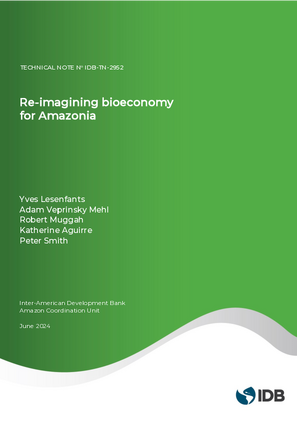Re-Imagining Bioeconomy for Amazonia
Date
Jun 2024
Record-breaking global temperatures and increasing frequency and intensity of extreme weather events underline the threat posed by the climate crisis. The Amazonia rainforest is widely regarded as one of several key bulwarks against global warming and a transition to a low-carbon future. Yet the worlds largest tropical forest is experiencing intense ecological degradation due to intensive cattle ranching, large-scale farming, unstainable mining, and a constellation of illegal activities. A paradigm shift is required in the economic model for the Amazonia and the people who live there. Put simply, it is critical that a higher value is attached to preserving a standing forest than one that is cleared. Bioeconomy offers a viable alternative precisely because of how it incentivizes ecological conservation while simultaneously generating economic opportunities based on the sustainable management of diverse natural resources.
There is no unified or shared definition of bioeconomy in the Amazonia. In North America and Western Europe, most definitions tend to emphasize economic growth and market competition with a particular focus on biotechnology to reconcile economic growth with environmental sustainability. Given that most resources available to support the development of the bioeconomy are aligned with interpretations from the Global North,“semantic asymmetries” between funders and countries and entrepreneurs in the Global South could impede access to vital investment, funding and support. Indeed, definitions exported from upper-income settings may not be fully commensurate or appropriate to regions such as the Amazonia, home to over 40 million residents. Amazonias immense biodiversity and the presence of over 400 separate indigenous and other traditional communities, many of whom depend on its resources for livelihoods and subsistence, underline the imperative of localized approaches to understanding bioeconomy and capitalizing on its potential.
There is no unified or shared definition of bioeconomy in the Amazonia. In North America and Western Europe, most definitions tend to emphasize economic growth and market competition with a particular focus on biotechnology to reconcile economic growth with environmental sustainability. Given that most resources available to support the development of the bioeconomy are aligned with interpretations from the Global North,“semantic asymmetries” between funders and countries and entrepreneurs in the Global South could impede access to vital investment, funding and support. Indeed, definitions exported from upper-income settings may not be fully commensurate or appropriate to regions such as the Amazonia, home to over 40 million residents. Amazonias immense biodiversity and the presence of over 400 separate indigenous and other traditional communities, many of whom depend on its resources for livelihoods and subsistence, underline the imperative of localized approaches to understanding bioeconomy and capitalizing on its potential.
NO




